Type 5s are curious, analytical, and perceptive problem-solvers.
Reading time: 5 minutes

Gregory Park, Ph.D.
Author
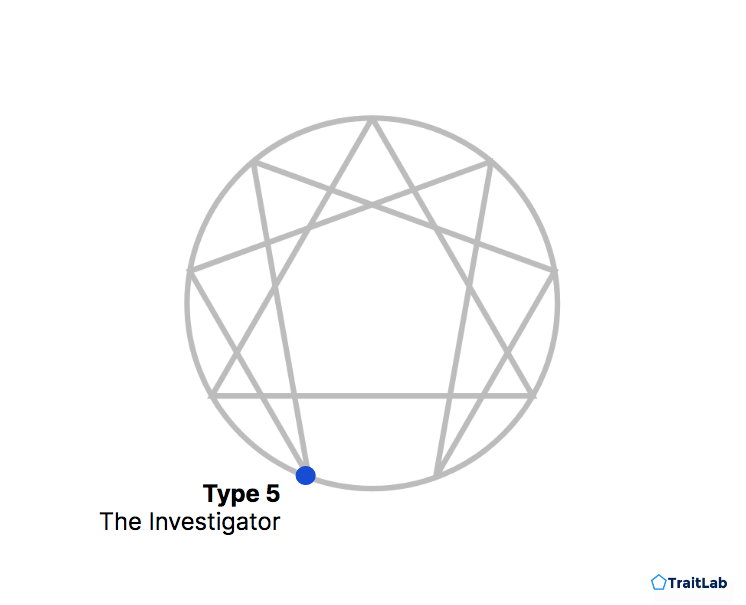
In the Enneagram framework, Type 5s — also known as Investigators or simply Fives — are curious, analytical, and perceptive problem-solvers.
Hook and colleagues (2021) describe Type 5s’ core desire as a need to understand. At their worst, Type 5s can become preoccupied with their own competence and skills, and they tend to be too cerebral and overanalyze situations.
This negative side emerges as a symptom of Type 5’s core fear of being helpless, incompetent, and incapable.

Do you know your closest Enneagram type?
See how your personality compares to all nine types with TraitLab's comprehensive assessment.
Others might describe Type 5s as
The wordcloud below shows the top 100 words used to describe Type 5s. Bigger words describe the more prominent aspects of most Type 5s.
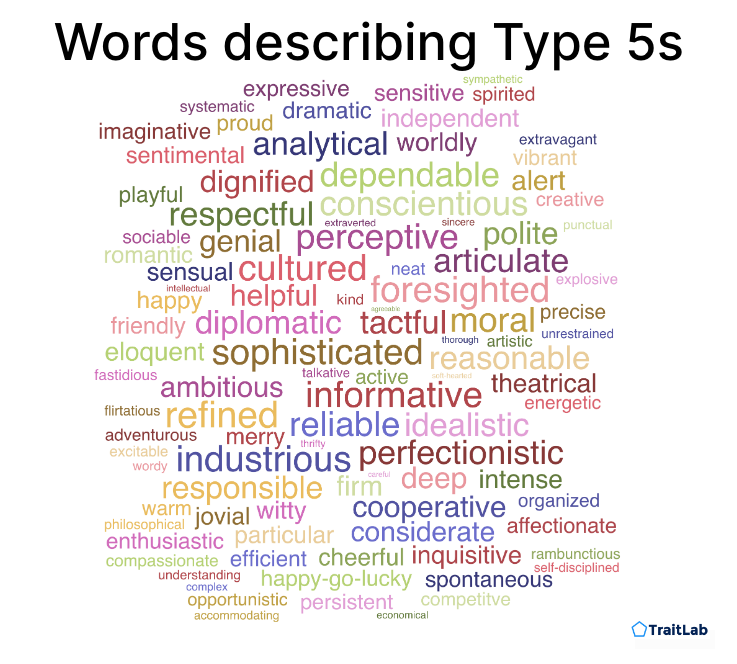
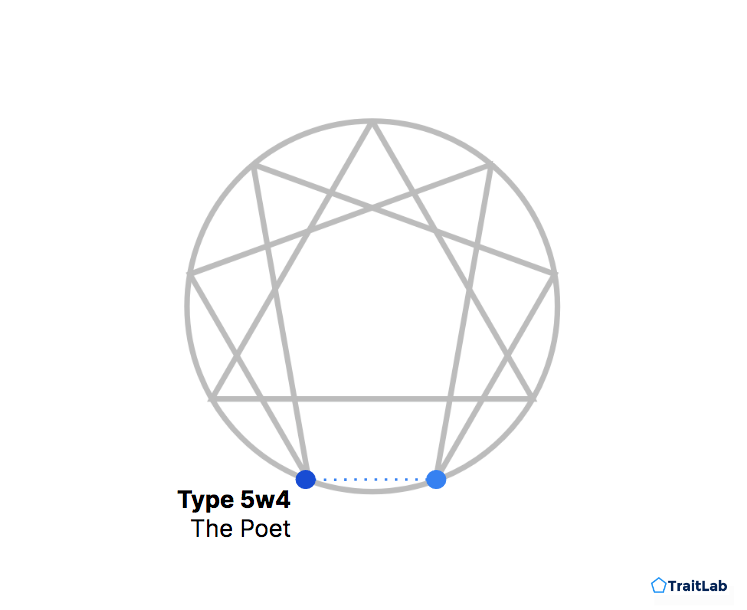
Type 5s with a 4 wing, or 5w4s, take on some characteristics of Type 4: The Individualist, including focusing on a rich inner world of ideas, emotions, and fantasy. In addition, Type 5w4s are more emotionally sensitive and often channel this sensitivity into creative works, including music, art, and writing.
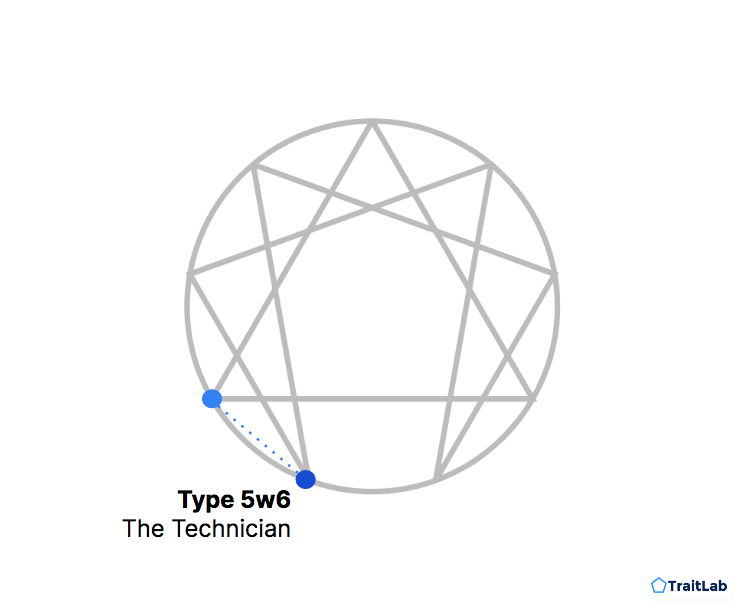
Type 5s with a 6 wing, or 5w6s, exhibit characteristics of Type 6: The Loyalist. While Type 5w6s still need to understand and systematize, they are more likely to direct this towards the world of things rather than people and ideas. Type 5w6s enjoy building deep knowledge of complex, technical areas, and they look for opportunities to turn their hard-won knowledge into useful solutions.
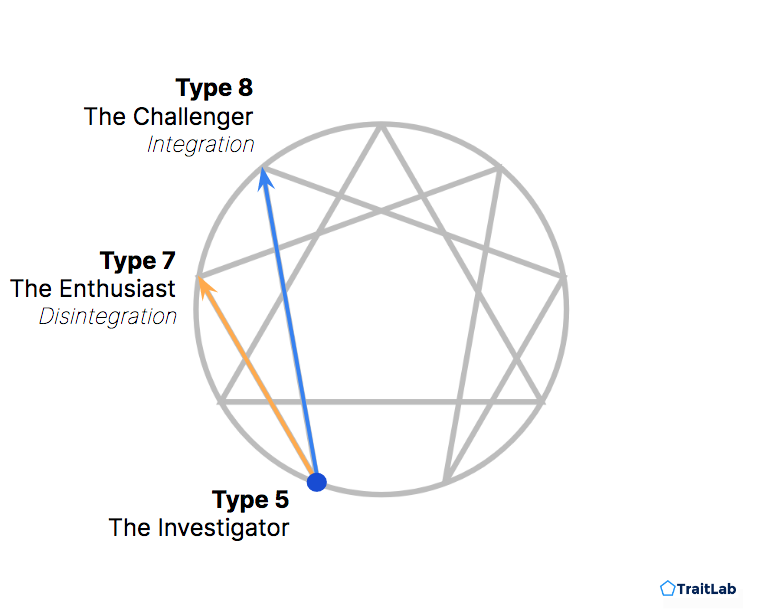
In times of health and security (i.e., integration), Type 5s shift towards Type 8: The Challenger. One indication of this change is calm, assertive energy and confidence in their decision-making. Rather than going at it alone, healthy 5s are more likely to include others in their vision, taking on leadership positions and motivating the group.
In times of stress (i.e., disintegration), Type 5s shift towards Type 7: The Enthusiast. Following this shift, Type 5s lose their usual laser focus, becoming more scattered, spontaneous, and disorganized. Disintegrated Type 5s may jump haphazardly from project to project while making no genuine progress on any of them.
Based on their distribution of personality traits, TraitLab estimates that roughly 15% of people would be classified as Type 5s.
In studies of personality structure, researchers often use a trait-based approach to describing the differences between people instead of personality types. The most well-established method is the Big Five, which describes differences along five broad dimensions:
Personality types are far less precise than getting exact Big Five measurements, but knowing your personality type can give you a rough idea of where you fall on each dimension.
In the graph below, each dot is a Type 5, placed by where they fall on the Big Five dimensions. You can see that Type 5s can vary quite a bit on any single dimension.
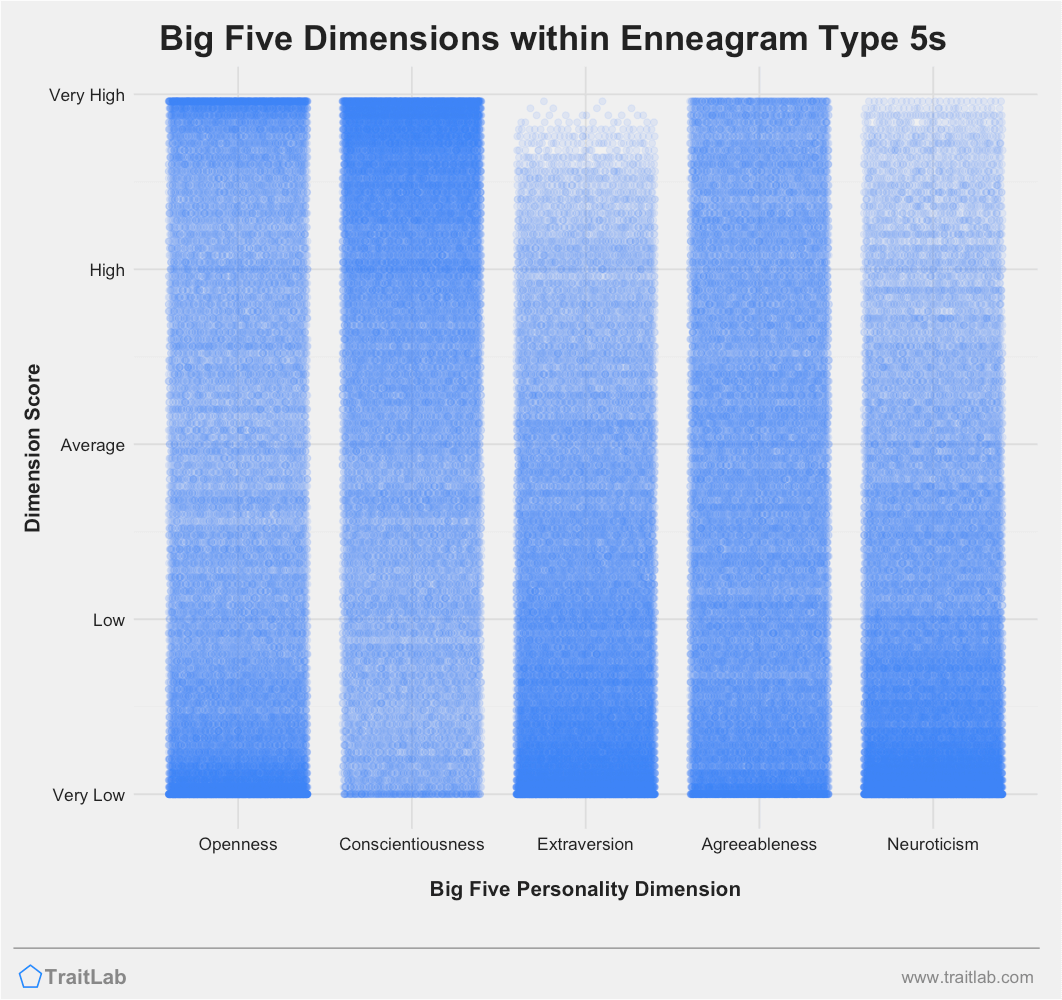
For example, on the Extraversion dimension, Type 5s tend to score much lower than average, so the Low and Very Low areas are very dark blue. However, there are still a few rare Type 5s on the higher end of Extraversion.
Below, you can see more detail on how Type 5s score on each Big Five dimension.
Type 5s can vary widely on Openness to Experience. In other words, some Type 5s are less open (more conventional or traditional), others are highly open, and most are somewhere in between.
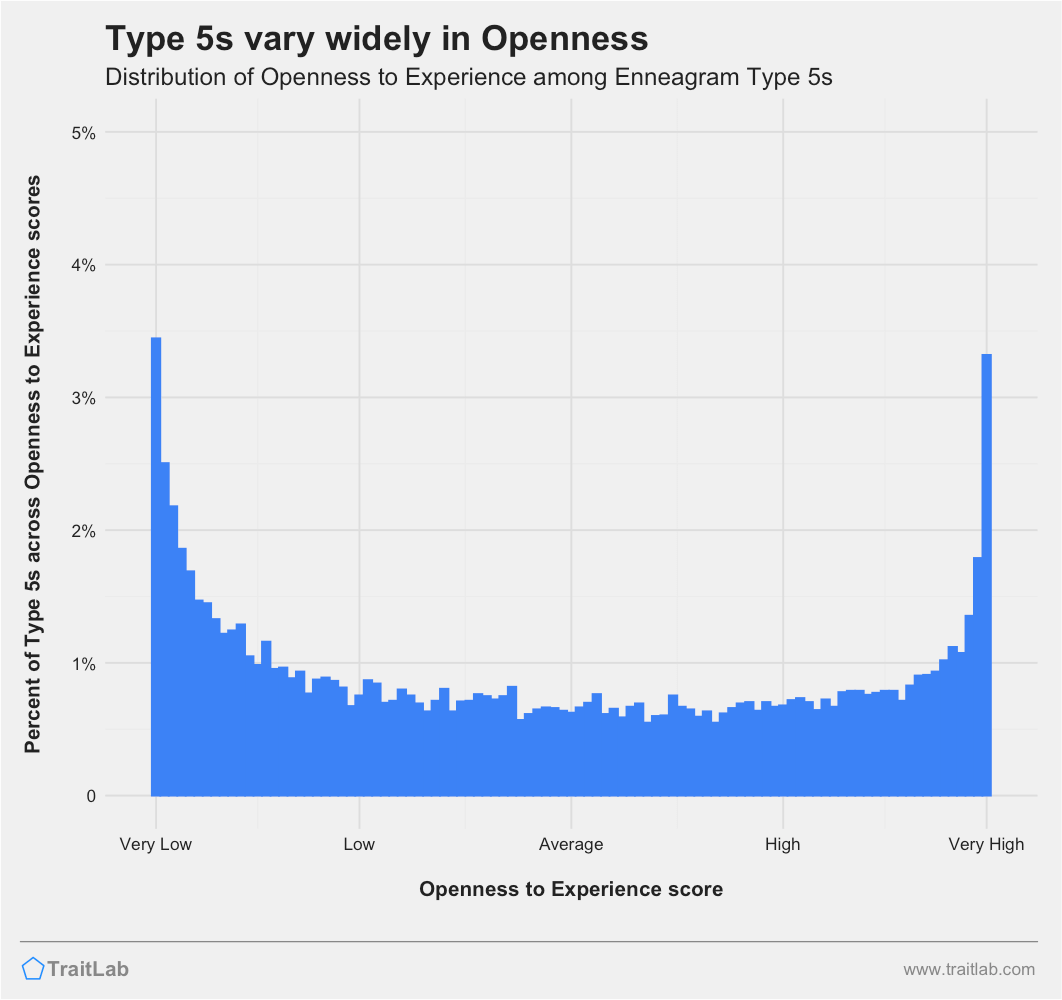
Openness to Experience describes your need for new information, feelings, and experiences.
Highly open people have diverse interests, and they may feel a constant need to learn and try new things.
Less open people prefer familiar ways of doing things. They are less interested in trying new things or seeking out new experiences. They also tend to be less eccentric and have more conventional tastes in hobbies, music, and reading material.
Type 5s typically score higher on Conscientiousness, with more Type 5s falling at the higher end of the scale.
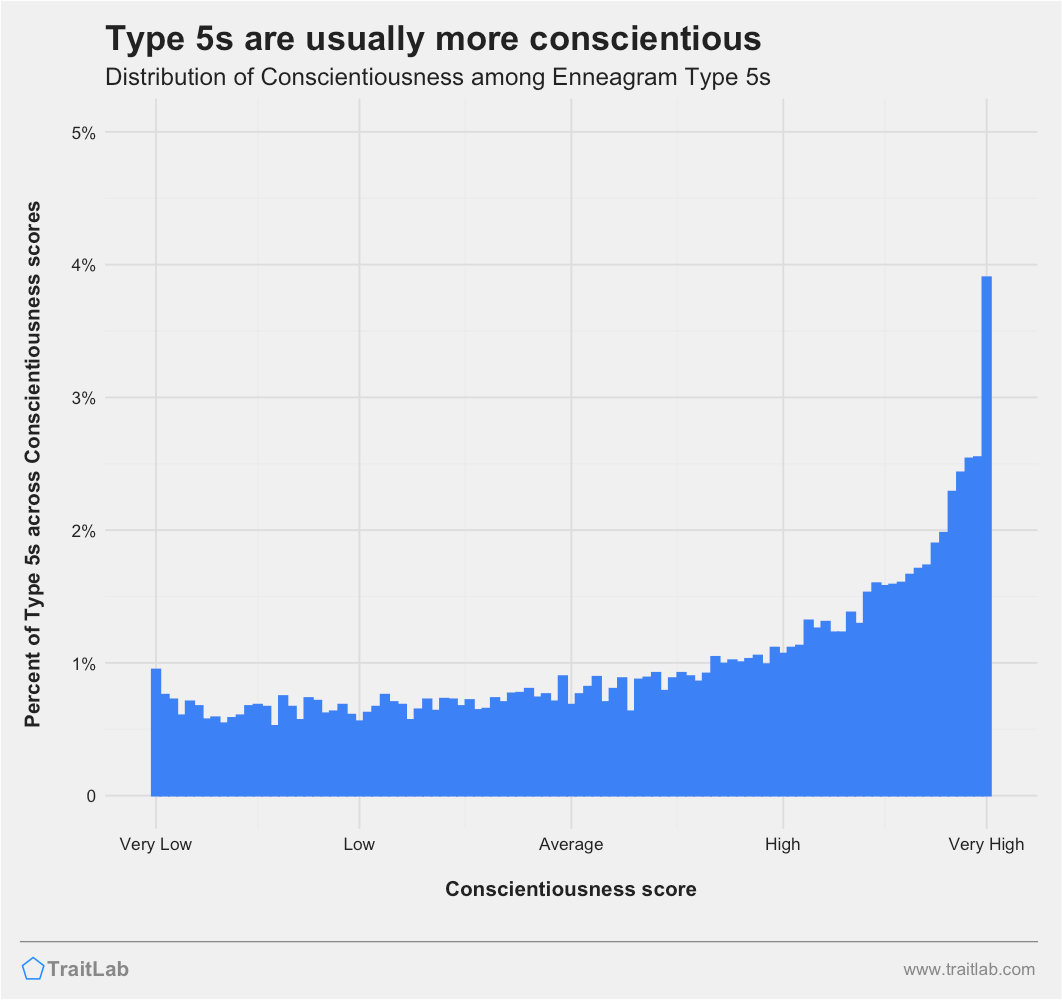
Conscientiousness describes our planning, organization, and regularity. Highly conscientious people, like most Type 5s, tend to create detailed plans to accomplish their goals and stick closely to them. They are less likely to be distracted by diversions or smaller short-term goals, and they excel at maintaining focus on the big picture.
Many Type 5s will have regular schedules and routines to ensure that they can efficiently make progress on multiple goals. They will have little tolerance for disorganization and chaos, and they will work diligently to create order out of a messy situation.
Many Type 5s fall just below average on Big Five Extraversion, which describes tendencies around social engagement and experiences and expressions of positive emotions.
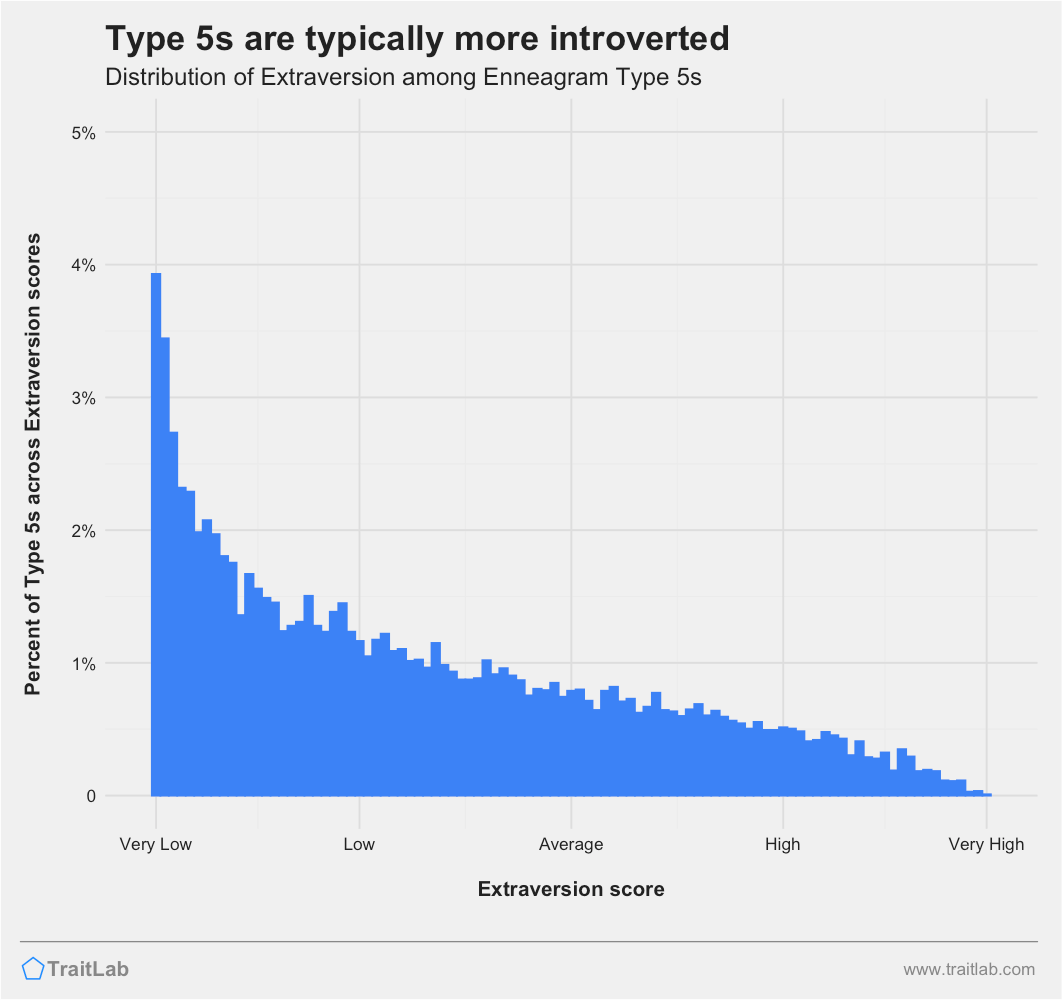
More introverted Type 5s may prefer to spend time engaged in more solitary activities or surround themselves with calm, less stimulating environments. Those Type 5s who fall closer to the average may more comfortably switch between highly social activities and quiet downtime alone.
A Type 5’s level of introversion will also be reflected in their patterns of emotional expression. As introversion increases, Type 5s may seem stoic and serious, less likely to display a range of positive emotions like joy, laughter, and excitement.
Type 5s often score slightly lower on Agreeableness and can be more demanding than most.
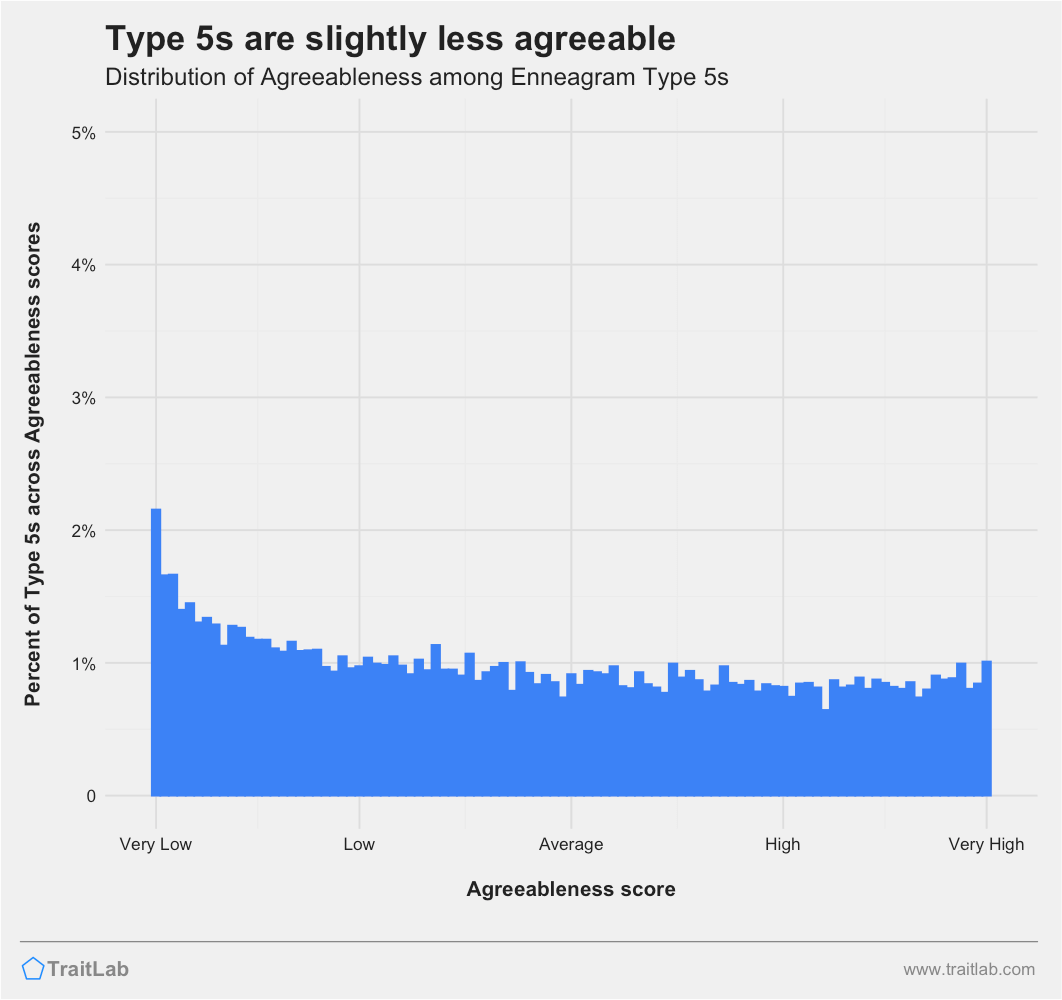
Agreeableness describes your interpersonal warmth, politeness, and empathy.
Like many Type 5, less agreeable (or more demanding) people are often less concerned with others when pursuing their own goals. They are more willing to create conflict or express disagreement across most situations and feel less discomfort during interpersonal disputes.
Highly agreeable people feel a deep need to maintain warm, friendly relationships and are naturally more hesitant to impose their will on others. They will be more considerate of how their actions impact others and try to reduce or resolve interpersonal conflicts when they arise.
While Type 5s also vary in their level of Neuroticism, most Type 5s fall on the lower, more emotionally stable end of the Neuroticism spectrum.
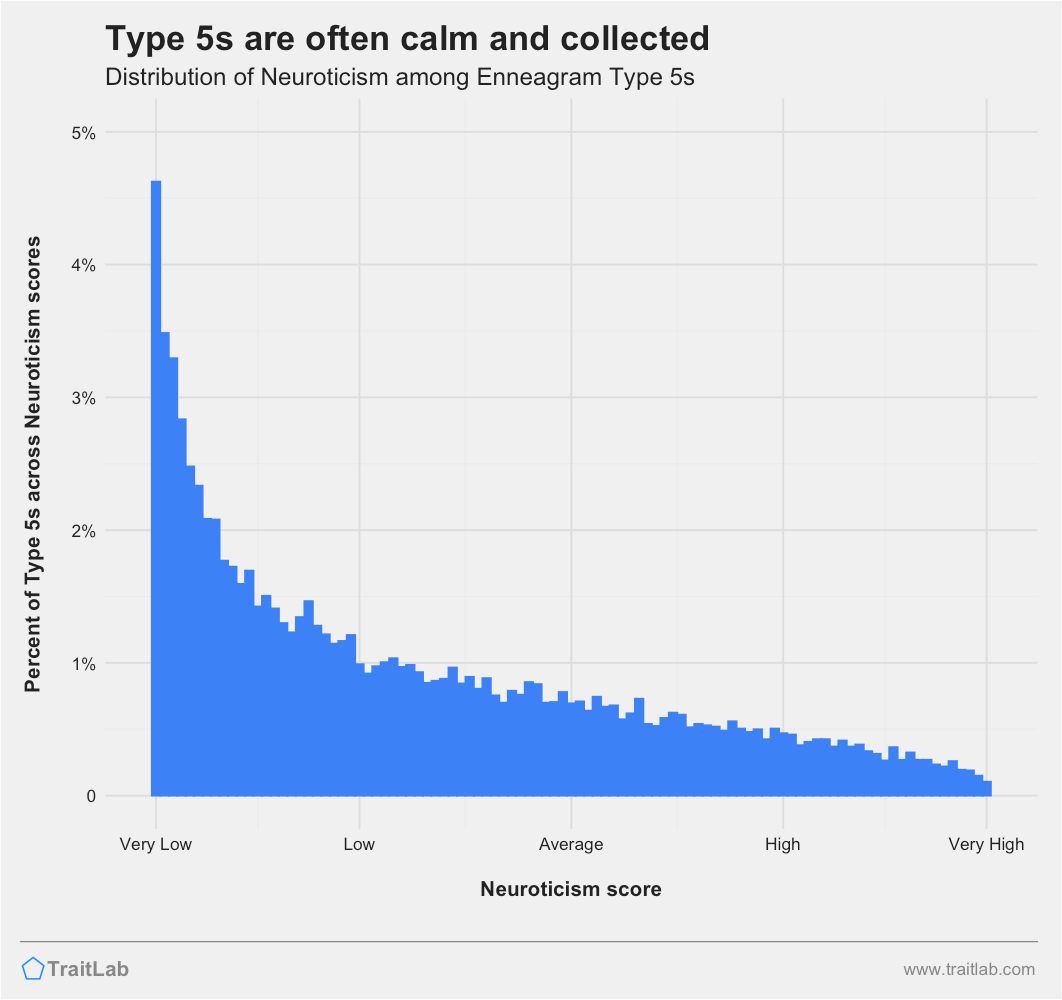
Neuroticism describes how we react to stress and our tendency to experience a variety of negative emotions. As most Type 5s are less neurotic or emotionally stable, they tend to have steadier, more predictable moods, and can more easily adapt to life’s sudden changes and disruptions.
Less neurotic people, like most Type 5s, generally experience less anxiety, anger, frustration, and sadness. They still experience these negative emotions, but less frequently and with less intensity than their more neurotic counterparts.
Likewise, Type 5s ruminate less on bad experiences and are less likely to doubt and second-guess themselves, resulting in a calmer, more confident style of thinking through problems and decision-making.
Most personalities can’t be described perfectly by a single Enneagram type.
However, with TraitLab’s Enneagram test, you can see which of the nine Enneagram types is most similar to your personality.
For comparisons between Type 5s and other Enneagram types, visit any of the type pairings below: